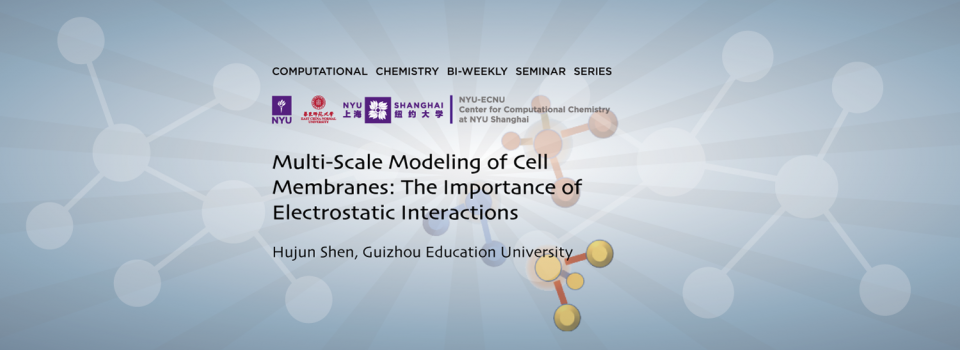
Abstract:
Membrane Dipole potential influences a variety of important biological processes involving cell membranes. Since it is quite challenging to directly measure the membrane dipole potential in experiments, molecular dynamics (MD) simulation has emerged as a powerful tool for a reasonable prediction of the dipole potential. Although MD predictions agree well with experiment about the sign of dipole potential, the magnitude of dipole potential varies significantly with the force field parameters. It has been shown that the positive dipole potential of PC bilayer membranes would be overestimated by a non-polarizable model owing to the treatment of many-body polarization effects in a mean-field fashion. Meanwhile, some popular coarse-grained (CG) models, such as the MARTINI model and its derivatives, fail to capture the positive dipole potential of PC bilayer membranes because of neglecting the importance of electrostatic interactions. In this presentation, we will show that a better description of electrostatic interactions in a water model (atomistic and CG models) can effectively improve the prediction of the dipole potential.
Biography:
Dr. Hujun Shen has been a Professor at the Guizhou Provincial Key Laboratory of Computation Nano-Material Science, Guizhou Education University since 2015. During 2010 - 2015, he was an Associate Professor at the State Key Laboratory of Molecular Reaction Dynamics, Dalian Institute of Chemical Physics (DICP), Chinese Academy of Sciences (CAS). He received a Ph.D. degree from the Johns Hopkins University in 2006. In 2006, he joined the Scheraga’s group and started his postdoctoral research at the department of chemical biology, Cornell University. His research interests span both computational biophysics and computational nanomaterials design. Much of his work has been devoted to the improvement of force fields for biomolecules (such as lipids, proteins, and nucleic acids) and nanomaterials (such as quantum dots).
Bi-Weekly Seminar Series by the NYU-ECNU Center for Computational Chemistry at NYU Shanghai


